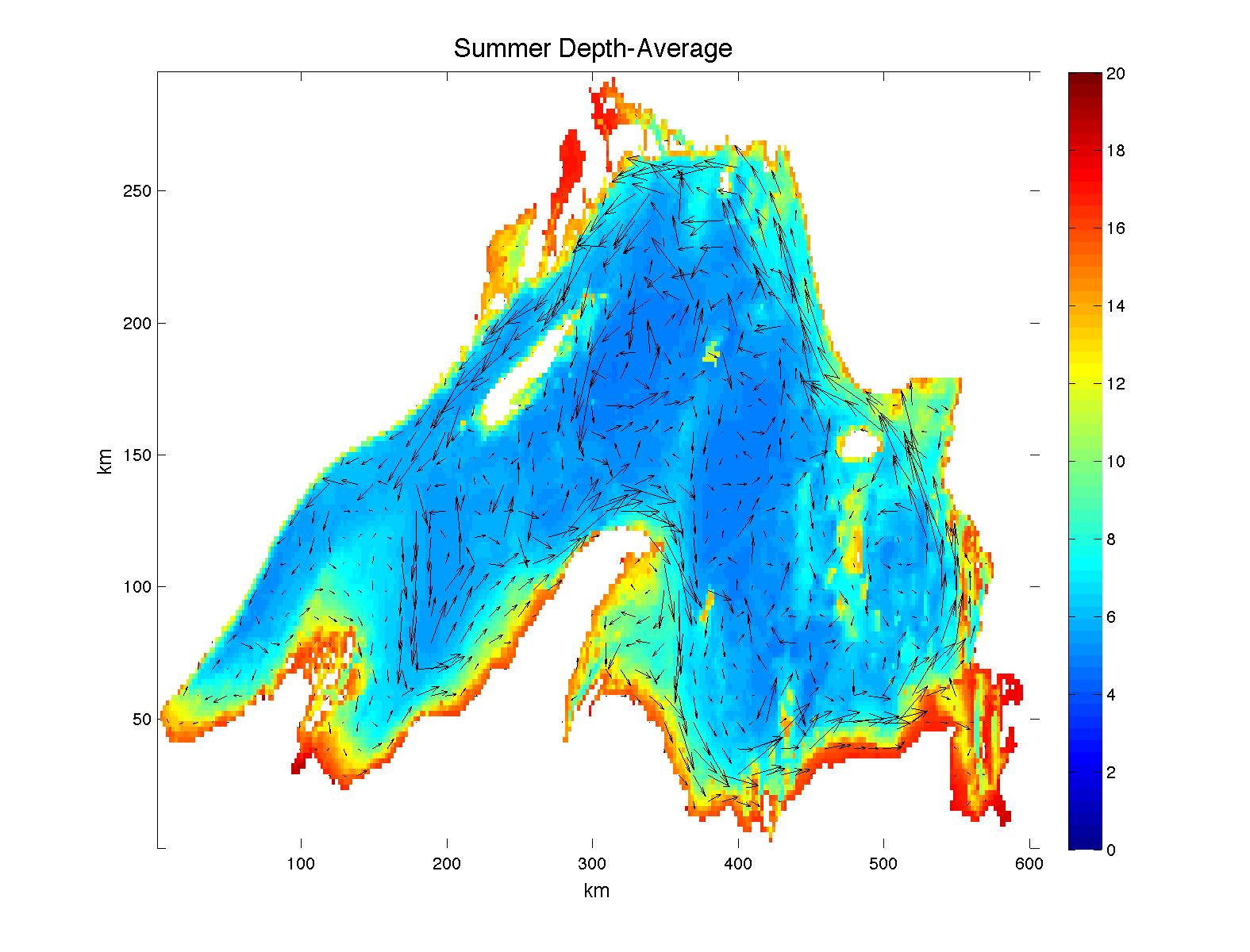Modeling the Great Lakes
story by Helen HillThis month we focus on the work of Galen McKinley and Val Bennington at the University of Wisconsin, Madison.
With a view to developing a quantitative understanding of the role such bodies of water may play in the terrestrial carbon cycle, Galen and Val have been using the MITgcm to put together a comprehensive, up-to-date description of the general circulation and temporal variability of Lake Superior. Figure 1 shows the summer-time mean circulation from their model.
Because of its large size (the lake is of order 500km long by 250km wide, with depths to 300 m) as well as difficulties associated with fieldwork (particularly in winter), Lake Superior’s general circulation is rather poorly known. Believing the terrestrial ecosystem around the lake to be a substantial sink of CO2 from the atmosphere, but not knowing to what degree carbon is being transferred to the lake and fluxed back to the atmosphere, Bennington and McKinley set out to build a holistic model of the system; step one being to build an up-to-date general circulation model. Using a hydrostatic version of the MITgcm, McKinley and Bennington’s z-coordinate model has dimensions 148 x 304 x 28 with horizontal resolution of 2km and vertical resolution varying from 5m (in the top 50m) to 33m at depth. Otherwise, the team uses the Jackett and McDougall (1995) equation of state, KPP vertical mixing, ggl90 contributions to vertical diffusivity, Smagorinsky horizontal viscosity and diffusion and a 3-DST flux limited advection scheme for temperature and tracers. The model has an implicit free surface and runs with a timestep of 200 seconds. Forcing is by atmospheric winds, temperature, humidity and radiation from the North American Regional Reanalysis Project (NARR) for the period 1979 to 2006, with the model calculating latent and sensible heat fluxes to determine net heat exchange. Instead of using the sea ice package, ice cover is prescribed from data – the presence of ice inhibiting air-lake, heat and momentum exchange in proportion to cell-wise ice coverage.
Using this circulation and a much-modified Dutkiewicz et al. 2005 ecosystem model with added carbon, McKinley and Bennington are able to look at Lake-atmosphere CO2 flux.
Figure 3 shows the evolution after the one-time release of two tracers at the mouths of the Ontonagon and St. Louis Rivers over a period of around two year.
Bennington and McKinley are running MITgcm at UW-Madison on the McKinley group’s 32-processor linux cluster, Poseidon. Credit for the initial physical Lake Superior setup of the MITgcm also goes to Nobuaki Kimura (now at National University of Taiwan).
Want to know more? Contact Val…
References:
Dutkiewicz, S., M. Follows, and P. Parekh, 2005:
Interactions of the iron and phosphorus cycles: a three-dimensional model study.




